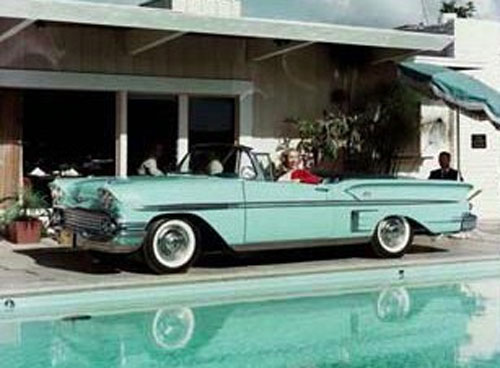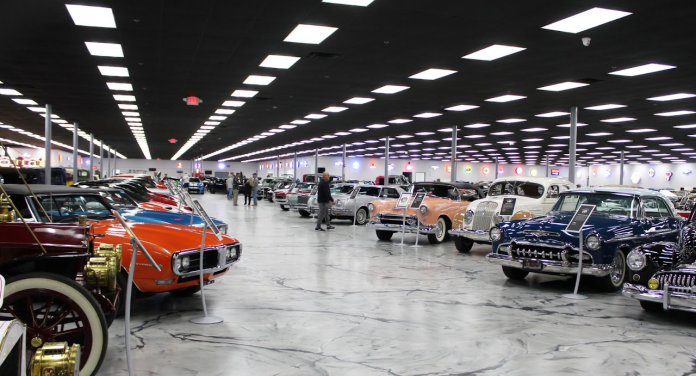
While muscle cars have their place in the automobile world, they are not the only ones that are appreciated. Here are some examples. 1968 Chevrolet Biscayne is a solid luxury sedan. It was ideal for Sunday drives and featured a powerful, 427-cubic inch V8 engine. Bisquick was its new name. These cars show the incredible power that a big-block engine can provide to a small sedan.
X-100
Mercury Marauder X-100 might be a new name for those who enjoy classic muscle cars. Built in 1971 the X-100 was a distinctive-looking car with the same performance as a Lincoln Continental. The car's curb weight was equivalent to that of a fully-loaded Chrysler 300 C. However, its power was impressive, and it topped out at 360 horsepower. The X-100 is a great option if you don't own one.

Coronet
The Coronet, a midsize sedan, was powered by a powerful engine that was designed for muscle cars of the late 1960s. The Coronet had many potential features and there were numerous aftermarket upgrades. The Coronet can be transformed into a serious hot rod or track car with a modern Hemi engine. Although the Coronet has been underrated, it remains a classic muscle vehicle with lots of potential.
GNX
Buick GNX has a 3.8-liter turbocharged V6. The turbocharged V6 has 276 horsepower, and 360 lb-ft torque. The car is a strong performer in quarter-mile drag racing, surpassing many high-performance vehicles. Additionally, the car can travel at 102 mph for quarter-miles. This would make it a record for most cars.
XR7
The Mercury Cougar XR7, one of the most popular muscle cars from 1970s America, is well-known. This exceptional car combined muscle car power with luxury, refinement, and luxury. Although its base engine is only 210 horsepower, the XR7's optional 429 big block delivers 325 hp. The car's interior features wood paneling and leather seating. The XR7, in other words was a rare luxury musclecar.
Oldsmobile Jetstar
The Oldsmobile Jetstar is a full-size muscle car. It was produced only twice in 1964 and 1965. Like the Pontiac Grand Prix, the Jetstar had a concave rear window and a squared-off roofline. It was considerably more expensive than its Starfire counterpart. Jetstars had hotter engines. They were available with a 394cu-in 345-hp motor. 1964 Oldsmobile Jetstars were offered with a four-barrel carburetor. 1965 models came with a more powerful engine: a 421-cu-in and 376-hp Tri-Power.

Torino GT
Ford made some incredible muscle cars, but it was the Torino GT that stood out. It was the first Torino full size to be equipped with a V8 engine. This made it a formidable car. The Torino GT featured a black hood, with a functional airscoop, a four-barrel Holley carburetor and Edelbrock intake. It was a family-friendly car, but it had plenty of power. It was actually so powerful that the 427 Cobra Jet could go the car for 14 seconds with a 4-speed manual transmission.
FAQ
What are the qualifications for an automotive technician
You must have high school, or GED, and be able to read and write well in English and math. You must also be able to read, and write. Before you can start working, you will have to pass a written exam and take a series practical tests.
What does it take for a mechanic to be a good one?
It takes years of practice and experience to become an expert mechanic. You can learn the most effective way to fix cars by learning from a professional mechanic.
You will spend time in a workshop learning everything you can about cars. Mechanical engineering books will be required to learn about mechanics and design.
Auto school is also required.
It's crucial to start as soon as possible. Do not wait to learn automotive technology. Start studying automotive technology now to become a mechanic.
What qualifications is required to become an mechanic?
To become a mechanic, you'll need to pass a series of exams. These exams include:
-
A general knowledge test
-
Practical exam
-
An apprenticeship test
These tests are meant to help you grasp the fundamentals of mechanical engineering and physics, before you begin your journey as a mechanic.
After passing these tests, you will be eligible to become a mechanic. However, you'll still need to complete an apprenticeship. This will involve training in the trade.
You'll need to attend classes and workshops to learn everything you need to know about repairing vehicles. Working alongside skilled mechanics is also a must.
A mechanic must be highly focused and attentive to detail in order to succeed. Repairs to vehicles require you to pay attention to every detail.
To be a successful mechanic, you will need patience and perseverance. If you don’t enjoy following instructions, this might not be the right career path.
But if you love cars and enjoy fixing them, you could be very happy in this line of work.
How long is an apprenticeship for an automotive mechanic?
A three-year apprenticeship in automotive mechanics takes. This includes two years in school and two as an apprentice. The first year is used to learn all aspects of the trade including safety procedures and theory. This year, you will also learn how to safely and efficiently use tools. After completing the first year, you'll then spend another year on-the-job training where you'll gain experience in different areas of the trade. These years will offer you the opportunity to attend formal classes.
The last year of the program is dedicated to gaining certification and qualifications in the field. These include NVQs (National Vocational Qualifications), that are given after passing specific industry exams. There are also HNCs (Higher National Certificates), which cover general subjects like management, business administration, customer service, and more. City & Guilds certificates offer qualifications in certain trades.
Statistics
- 52% of Mechanics in the United States think their salaries are enough for the cost of living in their area. (indeed.com)
- Apprentice mechanics earn significantly less hourly than mechanics who have completed training, with a median wage of approximately $14.50 an hour, according to PayScale. (jobhero.com)
- According to the BLS, the median annual salary for automotive service technicians and mechanics in the United States was $44,050 in May 2020. (uti.edu)
External Links
How To
How to diagnose your vehicle properly for repair
To determine if your car needs repairs, you should first look at the symptoms that your car presents. These steps will help you diagnose your car properly.
-
Check engine lights. You should inspect the dashboard lights, such as the engine light indicator and the oil pressure gauge. Also, check the battery light indicator. If any of them have been flashing for several days, it may mean something is wrong with your vehicle.
-
Pay attention to the treads on your tires. If the tires are worn out, they could cause problems with handling and braking. It is also important to inspect the wheel treads. They should look clean and be smooth. To do this, remove the wheels and take them out. Check the tread condition with a flashlight.
-
Pay attention to the level of your brake fluid. You must always monitor the level of your brake fluid. This will ensure that your brakes run smoothly. If your brake fluid level is low they might not work properly when you apply pressure.
-
Test the suspension system. The suspension system in vehicles absorbs vibrations and shocks. It allows for better control, smooth acceleration, and deceleration. If your vehicle has a suspension problem, it might feel wobbly or shake uncontrollably. If you are unsure if your vehicle is suffering from a suspension problem, put weight on the front and rear axles to check the movement.
-
Examine your steering column. Steering columns are used to connect the steering wheel to the rest of the vehicle's components. The steering column can often be damaged by an accident. Replace it if your steering column feels loose or unsteady.
-
Pay attention to the exhaust pipe. The exhaust pipes are responsible for moving gases from the combustion chamber into the atmosphere. If your exhaust pipe leaks or cracks, it will allow harmful fumes into your cabin. Additionally, your tailpipe should be fixed immediately if it is bent.
-
Take a look at the underside of your hood. Check under your hood for any unusual or missing components. Fluids could be leaking from your engine. Also, professional technicians should be called if you detect an unusual smell coming out of your engine compartment.
-
You should inspect your air filter. The air filter in your vehicle collects dirt and dust from the environment. A dirty air filter causes your vehicle to run poorly. Replace your air filter regularly.
-
The fan belt should be checked. Your vehicle's fan belt connects the engine to the transmission. If the fanbel breaks, your engine won't turn. It's easy to replace the belt. All you need are a screwdriver & pliers.
-
Make sure you inspect the radiator hoses and hoses. The radiator hose carries water from the radiator to the engine. If the hose becomes damaged or cracked, hot liquid can be emitted onto the engine. To repair the hose, you will only need to use a pair needle-nosepliers and a wire brush.
-
The windshield wipers should be checked. Windshield wipers use electricity to clean away snow and rain. If they stop working, streaks could be left on your glass. You can fix the problem by changing the washer fluid.
-
You should inspect the cables. Your car's electrical system is powered by batteries. Make sure you disconnect the negative cable before replacing batteries. Failure to do so can damage your alternator.
-
Make sure your headlights are working properly. Headlights illuminate the road ahead of you. It can lead to poor visibility if they aren't working properly. You can check the bulbs to make sure they aren't burned out.
-
Pay attention to the lights. If you approach other drivers at night, lights will warn them. One that doesn't work could cause you to be distracted, and possibly lead to an injury.
-
Check your brakes. Brakes will reduce the speed of your car in case of an accident. If your brakes aren't working properly, you may lose control and crash into other cars.
-
Check the oil regularly. The oil keeps your engine well lubricated. This oil helps to prevent metal parts becoming too worn out. It is recommended to change the oil once a month.